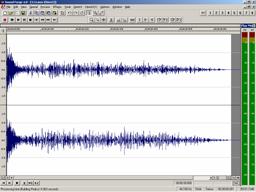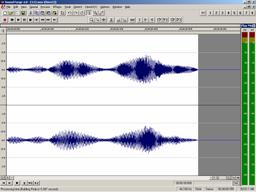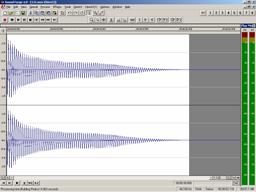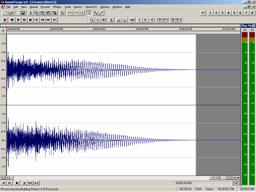C. Base Samples1. SelectionThe selection of the samples was integral to establishing diversity and contrast. To formulate the base samples the program Absynth, by Native Instruments, was used. Four factory presets, each very different from the other were selected. The next step was tweaking and changing them until they were sufficiently unique, diverse and personal. Although such descriptions are quite subjective, they consisted of: Base Sample, Group 1: A metallic cymbal-like hit (1/4 second in length). 2. MorphingThe concept of morphing for Azimuth was simply cross-fading from one sample to another, creating a smooth transition. To morph the samples in this manner a stereo waveform editing program was used. Various sections of the secondary samples were blended with the original base samples until they sounded natural and smooth. This was challenging because of the diversity of sonic components. In most cases the secondary samples were cut down in size so that a portion fit perfectly with the primary sample. The goal was to make an altogether new sound, which had a relationship to the original two samples but was its own entity as well. This involved removing the attack portion of the secondary sample, using only the sustain and decay, inserting a smooth linear fade for its attack and laying it over the base sample which had been truncated about halfway through its sustain segment and linearly faded out. In essence this was transitioning from one timbre to another. The reasoning behind it was to provide a relational quality between some score events; those that used the morphed samples, could subsequently be mixed within a single group and within other groups, tying the movements together timbrally. As can be observed in the screenshots in Figure 2 thru Figure 5, the beginning of each sample within a group is the same. The second portion is dependant upon the secondary sample. *Click on the image to hear an mp3 of the sample. |
Go To Page: |

Dedicated to the Advancement of Human Consciousness















